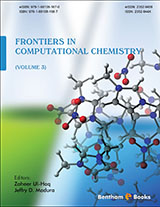Abstract
Computational chemistry that comprises of Quantum mechanics (QM), Monte-Carlo (MC), molecular dynamics (MD) and ab initio MD (AIMD) simulation has emerged as a prospective tool for the calculation of various molecular properties by capturing the complex molecular interactions and is being used extensively in the fields of science and engineering. In that context, design and screening of suitable ligands for efficient separation of metal ions is imperative and demanding in view of the safe removal of metal ions from nuclear and chemical waste stream employing the much practiced separation processes namely: solvent extraction and ion exchange. In solvent extraction, an organic solvent containing one or more ligands and in ion exchange, a solid matrix called stationary phase, the surface of which is decorated by functional group/ligands are widely used to remove the desired metal ions from the aqueous medium.
This chapter will focus on designing new ligands or improving the existing ones for understanding the accurate nature of host-guest interactions together with the bonding nature with respect to the donor atom, complexation thermodynamics, conformational features of the ligands and solvent effect. Computational chemistry can play a crucial role for the quantitative predictions of the structural parameters, coordination number, complexation stability and selectivity of metal ion –ligand complexation with respect to the solvent extraction and ion exchange processes. Use of ionic liquid as a novel and alternative solvent to common organic solvent has also been discussed along with its dual extraction mechanism. Further, how Quantum electronic structure calculation can be fruitfully used for selecting the suitable ligand anchored on a solid matrix for a complex separation process has been demonstrated.
Keywords: AIMD, BE, Born-Haber Thermodynamic cycle, Coordination number, COSMO, DFT, Entropy, Free energy, Geometry, Ion exchange, MP2, Partition coefficients, Radial distribution function, Separation factor, Solvent extraction.






















